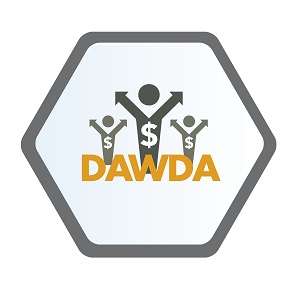Overview
Section 852 of the National Defense Authorization Act (NDAA) for Fiscal Year 2008, Public Law No. 110-181, directed the establishment of the Defense Acquisition Workforce Development Account (DAWDA). This fund permits the Department of Defense to recruit and hire, develop and train, and retain its Acquisition workforce. NDAA 2016 makes DAWDA permanent.
The U.S. Army Acquisition Support Center’s (USAASC) DACM Office is responsible for identifying the Army’s DAWDA initiatives. There are 4 Categories under the DAWDA: Training and Career Development; Management Support, Analytics, and Tools; Recruiting, Recognition, and Retention Incentives; and Hiring; further stratified by 23 priorities.
Categories
- Category 1: Training and Career Development. This category provides the mechanism for the Army to: develop a more detailed understanding of their Army Acquisition Workforce and developmental shortcomings; test innovative pilot programs; and provide the personnel development necessary to achieve the desired outcomes. Initiatives in this category will provide developmental/broadening assignments; programs at academic institutions; training to fill target gaps in acquisition functional competencies; competency management and assessment; workforce planning; training enhancements and capacity expansion; and opportunities to acquire joint and interagency experience. This category includes:
- Leadership Training – Training that focuses on leadership and executive competencies (Supervisory/Management/Leadership related)
- Digital Transformation Training – courses/training required to re-skill, upskill, and sustain data science, software design, software development, software testing, artificial intelligence, cybersecurity, networking, database management, mathematics, statistics, data visualization, modeling and forecasting
- Functional/Technical Training – Courses/training necessary to gain knowledge, skills and abilities associated with the technical and functional aspects of one’s acquisition assignment to include Artificial Intelligence (AI) competencies
- Advanced Academic Education – College or University level courses
- Developmental/Rotational/Broadening Assignments – Temporary assignments of less than 180 days aimed at cultivating and broadening experiences and skill sets beyond one’s current assignment
- Conference/Seminar/Symposium participation – Attendance fees, registration fees, and other associated costs of attending an acquisition-related conference, seminar, or symposium
- Other Training and Development – Specialized or required training and developmental courses or assignments to support Army acquisition missions. Does not fit any other Line 1 category
- Training Facility Upgrades – Plant, property and equipment upgrades of facilities in support of Army acquisition training
- Category 2: Management Support, Analytics, and Tools. This category includes:
- Digital Transformation Tools – tools that enable the design, development, testing, reporting, and automation of digital processes
- Workforce Planning Initiatives – Initiatives to shape the acquisition workforce to achieve current and future requirements usually at enterprise level
- Studies/Assessments – External services that provide analysis, and recommendations to improve the workforce
- Management Support Systems – Tools, systems, applications to support the management of Army Acquisition Workforce
- Other Human Capital Initiatives – Does not fit any other Line 2 category
- Category 3:Recruiting, Recognition and Retention Incentives. This category often utilizes a Service commitment to retain acquisition civilian government employees for a certain length of time as well as support training and education programs. Initiatives in this line item will retain high performers with critical acquisition skills, those in key leadership positions, and improve retention in acquisition positions that are in short supply through incentives and programs designed to make a career in Army acquisition more attractive. This category includes retention bonuses, tuition assistance, and student loan repayments. Permanent Change of Station (PCS) payments may be utilized to support the execution of service wide talent management and development programs such as the centralized selection of key leadership positions and senior level education programs. In addition, initiatives in this line item seek to attract qualified applicants in such critically needed areas such as: Contracting; Cost Estimating; Science, Technology, Engineering, and Mathematics (STEM); minority applicants; and recent college graduates. This complements other hiring initiatives by enabling the U. S. Army to hire high demand talent more effectively in an increasingly competitive labor market. Initiatives in this category will deliberately market the Army Acquisition community as an employer of choice. It is an Army goal to maintain a capable, and ready civilian and military workforce, which this category supports. These types of programs are a direct investment in our acquisition workforce career development as well as provide retention incentives. This category includes:
- Recognition Awards – Individual / Group Awards, one-time, lump sum
- Recruitment Incentives – Hiring-related monetary incentives for purposes of individual recruitment
- Relocation Incentives -Relocation-related monetary incentives for encouraging employees to relocate for assignment purposes
- Permanent Change of Station – Costs associated with relocating an employee to a new duty assignment. Special circumstances only
- University/Career Fair/Outreach – Efforts associated with outreach to and recruitment of Army acquisition workforce personnel
- Retention Incentives – Retention-related monetary incentives for retaining valuable employees
- Student Loan Repayment Program (SLRP)
- Category 4: This category provides the mechanism for organizations to request funding to support Intern, Entry level, Journeymen, Expert and Highly Qualified Expert (HQE) hiring in support of approved concept plans and / or against needs necessitated by attrition of mission critical acquisition personnel. Given the reduction in the AAW due to the Bask-to-Basics initiative, the Army is limiting use of this category and focusing hiring only a very small quantity of positions. This category includes:
- Entry Level Hiring – Loaded cost of hiring entry level employees, typically GS-05/07/09
- Journeyman Level Hiring – Loaded cost of hiring experienced employees, typically GS12/13 level
- Highly Qualified Expert Hiring – Loaded cost of hiring highly qualified expert employees at the executive level
- Sustainment Labor Hiring – Loaded salary cost for existing onboard DAWDA hires
Program Regulations
Contacts
Michael Manduzio
Army DAWDA Program Manager
Phone: 520-671-0102
Email: michael.j.manduzio.civ@army.mil
Jessica Newberry
Army DAWDA Program Analyst
Phone: 520-706-0319
Email: jessica.c.newberry.civ@army.mil








